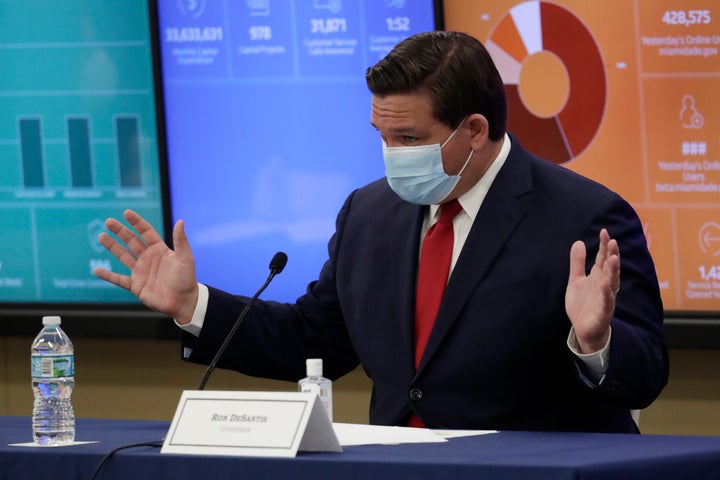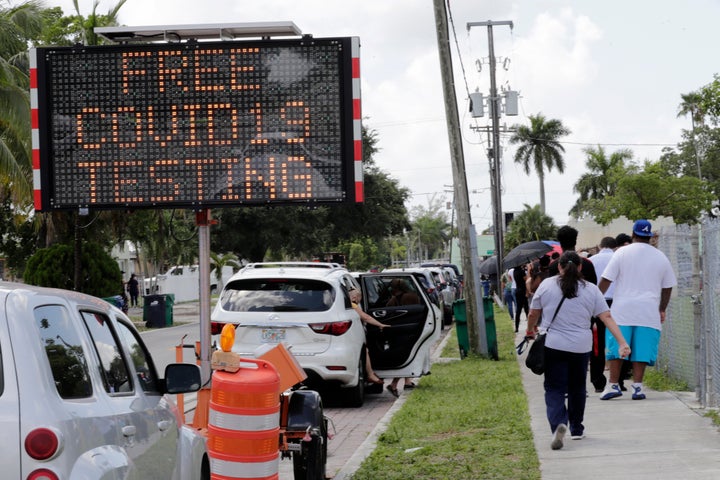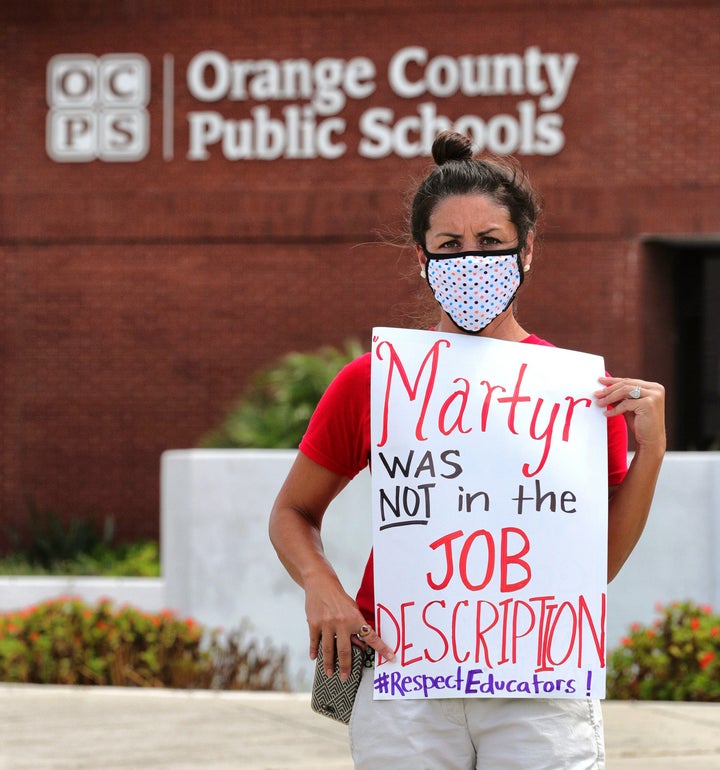Nearly one-third of children who have been tested for the coronavirus in Florida have tested positive, according to data from the state’s Department of Health that comes amid ongoing debate and uncertainty over whether schools will reopen this fall.
Of the 54,022 people under the age of 18 who have been tested for COVID-19 in Florida, 16,797 of them, or roughly 31%, have tested positive, data released Friday shows. In comparison, roughly 11% of everyone in the state who has been tested for the virus — roughly 2.8 million people — has tested positive.
Nearly half of the state’s positive cases among children were in the counties of Broward, Dade, Hillsborough and Palm Beach.
Cases throughout the Sunshine State have risen at alarming rates in recent weeks. On Thursday the state set a new one-day coronavirus death record while also reporting nearly 14,000 new cases of COVID-19 ― the second-highest daily total that the state has seen. Its highest total reported last weekend set a national record.
Amid this growth, Florida Gov. Ron DeSantis (R) has continued to push for schools to reopen this fall, with him on Tuesday telling mayors in south Florida — the state’s hardest-hit area for cases — that doing so is low-risk.

“There is risk in everything,” he said, according to the Tampa Bay Times. “What’s the level of risk for school-age children? … Fortunately, the risk is relatively low.”
Various studies have suggested that children are less likely to contract the virus as well as transmit it to adults, though it’s not yet clear why.
Dr. Megan Culler Freeman, a virologist and pediatrician at the University of Pittsburgh School of Medicine, suggested that case numbers among children are low because this age group is less likely to be tested. This may be because children typically contract a more mild form of the disease and don’t show symptoms.
“It does seem that kids are less affected than adults. But I think their role in community spread is still somewhat untested,” she told NPR.
Though the virus’s symptoms have been generally more mild among children than adults, serious illness and even death are still occurring.

In Florida, 213 children have been hospitalized for the virus and four of them have died. Those aged 15-17 make up the highest percentage of those hospitalized, at 29%, while those aged 10-14 ranked second at 26%, according to the state’s health department data.
Dr. Alina Alonso, the director of Palm Beach County’s health department, which has reported some of the highest COVID-19 case numbers in Florida, warned at a meeting Tuesday with county commissioners that the virus’s symptoms may be mild among children but that potential long-term effects are being seen.
“They are seeing there is damage to the lungs in these asymptomatic children,” she said, citing X-ray records, according to the South Florida Sun-Sentinel.
“We don’t know how that is going to manifest a year from now or two years from now,” she said. “Is that child going to have chronic pulmonary problems or not?”
Uncertainties remain about how the virus spreads, as well.

The World Health Organization last week revised its COVID-19 transmission guidelines to note that it cannot rule out the likelihood that the virus can go airborne, particularly in enclosed spaces like restaurants, gyms and classrooms.
Earlier this month, the American Academy of Pediatrics and national education groups voiced support of students returning to school this fall but in a way that prioritizes health safety for both students and teachers. One method suggested by the organizations in a joint statement is investing in schools so that they can “adapt safety protocols to make in-person learning safe and feasible.”
The Centers for Disease Control and Prevention has released a number of measures that reopening schools can take to help protect students and staff. The guidelines include hand-washing, mask-wearing, not sharing materials, and keeping people at least 6 feet apart.
Department of Education Secretary Betsy DeVos, who has expressed support of President Donald Trump’s threat of withholding federal funds to schools that don’t reopen, has said that the CDC’s safety guidelines for schools are not mandatory but “flexible.”
Calling all HuffPost superfans!
Sign up for membership to become a founding member and help shape HuffPost’s next chapter
Credit: Source link